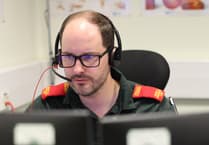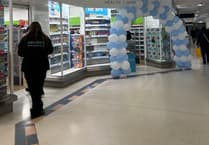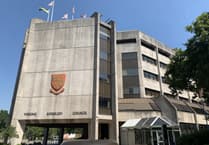A LARGE encampment of Gypsies and travellers existed in Horsell – around Arthurs Bridge, which crosses the Basingstoke Canal, and along Well Lane – until the 1930s.
In the area around Well Lane there was a camp known locally as Black Patch with caravans and sheds.
Every so often, new information comes my way that adds to the understanding of the Gypsies and travellers and the conditions in which they lived.
While researching his family tree, Stuart Bampton from Hampshire has found a local newspaper report of a court case from June 1915 that features his great, great grandfather, Samuel Smith, who was about 70 years of age at the time.
Before Woking magistrates was a Mark Stevens – although on the charge sheet his surname was listed as Gregory – who had pleaded not guilty to assaulting Samuel. They both gave their addresses as “van dwellers at Arthurs Bridge”.
The report stated that Samuel was described as “a well-known character, [who] is elderly and has only one eye, which had been nearly closed by the injury he received and the side of his face [is] greatly discoloured”. Stuart believes that Samuel’s blind eye was due to a cataract.
The court report said Samuel had heard two or three men outside his caravan talking about a set of harnesses for horses that were being sold.

One of the men said: “Sammy knows a bit about horses.” Samuel spoke to them. An argument took place over the £5 price being asked, Samuel saying to them “he could buy a brand new set in London for £5”. Then the alleged assault took place.
A witness by the name of Robert Matthews told the court he was the person buying the set of harnesses when Samuel interfered. Samuel was told to go back to his caravan, which he did, but then returned and said to Stevens: “You are a dead man.”
Another witness told the court he could not say whether Stevens used his fist or some other “unlawful weapon” but the blow he gave rendered Samuel unconscious for 45 minutes.
Stevens’ account of the incident was different. He said Samuel made a dash at him and so he gave him a hard push, causing Samuel to fall face downwards against a chicken run. He added that when Samuel got up, he came for him again and Stevens’ brother Matthew stopped him.
Matthew Stevens, also of Well Lane, corroborated this and added that when Samuel fell down his waistcoat flew open and a knife, seven inches long, fell out.
Mark Stevens was bound over to keep the peace for six months and ordered to pay costs.
The rather rare photos shown here include one of the Black Patch encampment. This is courtesy of Mike Crute, who wife’s antecedents, the Hoadley family, were recorded in 1934 by Woking Urban District Council’s medical officer for health as living there. Other families named were Johnson, Eastwood, Matthews, Gregory and Bowers.
Following the officer’s inspection of the camp, it was proposed to remove the dwellings under the 1930 Housing Act for Human Habitation.
The picture postcard that features the canal and Arthurs Bridge itself is from my collection.
The view is towards the bridge from the town centre direction. Just visible on the right – beyond the barge and between the large tree and a house – are two Gypsy caravans, on what is now Lockfield Drive.
If anyone can add further details, particularly of the Smith family who lived at the camp, Stuart Bampton would be pleased to hear from you. Please call Stuart on 07899 633504 or contact me.
If you have some memories or old pictures relating to the Woking area, call David Rose on 01483 838960, or drop a line to the News & Mail.
David Rose is a local historian and writer who specialises in what he calls “the history within living memory” of people, places and events in the west Surrey area covering towns such as Woking and Guildford. He collects old photos and memorabilia relating to the area and the subject, and regularly gives illustrated local history talks to groups and societies. For enquiries and bookings please phone or email him at: [email protected]




